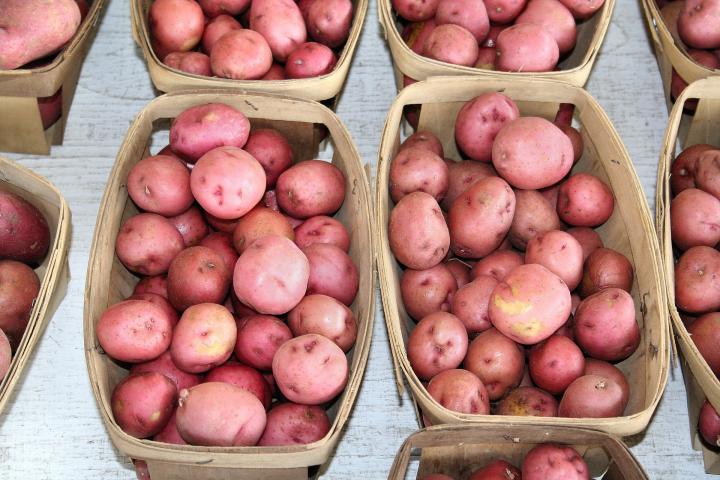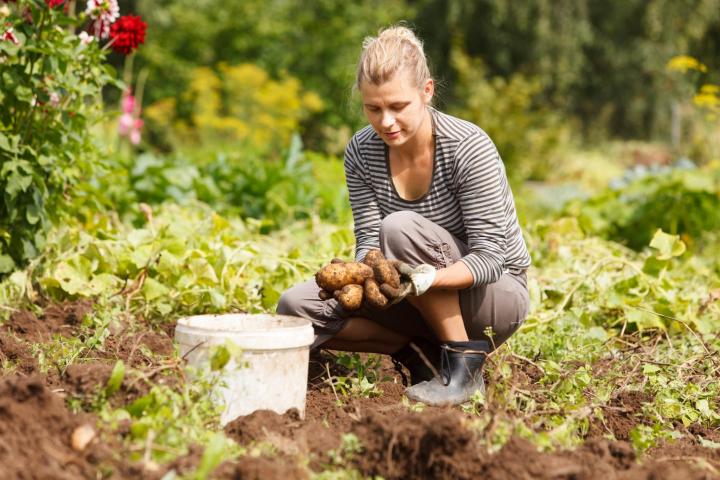4 Tips for Choosing the Right Potatoes for Your Garden
Homegrown potatoes have homegrown taste. But what type and variety of potato should you be growing in your home garden? Read on (or watch our video) to find out about the different types of potatoes so you can choose the best varieties to meet your needs.
Chipped, fried, sautéed, boiled, baked or mashed, potatoes are one vegetable we simply couldn’t be without.
1. Consider Culinary Uses
The first thing to think about is how you want to use your potatoes. Different varieties have different amounts of starch, making the flesh of some break down into a fluffy texture while others retain a firmer, waxy texture.
- Potatoes that are high in starch are great at absorbing liquids, causing the potato to break apart in cooking. These types are great for baking, mashing or cutting into wedges or fries. They make the ideal accompaniment to roast meats too.
- Waxy potatoes contain less starch and hold together during cooking. This makes them ideal for cooking in soups and stews, where you want the potatoes to retain their shape. They are also the ones to use in salads.
Potato Types and Culinary Uses
Here’s an idea of which cooking method best fits different varieties, though many varieties are versatile.
- High-starch: Idaho potatoes. Great for baked potatoes or fried potatoes.
- Medium-starch: Long white potaotes. Excellent baked, fried, or mashed.
- Low-to-medium starch: Yukon gold, yellow potatoes. Great mashed, also roasted, baked, soups and chowders
- Low starch and waxy: Round red and round white potatoes, new potoates. Roasted, boiled, salads.
Look closely at the descriptions for different varieties and make sure you pick one that’s suitable for how you want to cook it.

2. How Long It Takes to Mature
First Early vs. Second Early vs. Main-crop Potatoes
Potatoes are also categorized according to how long it takes the plants to reach harvest time.
- Early varieties are, unsurprisingly, the earliest to crop, and are subdivided into ‘first earlies’ that are ready as soon as the start of summer and ‘second earlies’ following on a couple of weeks later. Early potatoes will naturally be smaller at harvest than maincrop types.
- Main-crop potatoes are next and are ready to dig up and enjoy anytime from mid to late summer onwards.

3. Amount of Growing Space
Any potato will grow in ground that is moist, fertile and well-drained. However, some potatoes need more room than others to grow.
- Early potatoes can be planted in rows just one foot (30cm) apart.
- Maincrop potatoes need at least one and a half feet (45cm) between rows.
Many gardeners also like to grow potatoes in containers or special potato sacks, which are perfect on patios or where space is at a premium, as long as the roots can remain relatively cool during the summer. If you want to grow your potatoes like this pick a salad or early variety of potato. These types tend to grow less foliage, suiting this compact growing environment.
4. Disease-Resistant Potato Varieties
Potatoes are pretty resilient plants, but like any crop, they’re vulnerable to a few diseases. Chief among these is blight, a fungus that can cause foliage to collapse and the tubers to rot, closely followed by scurf or scab.
The solution to these woes lies in choosing varieties described as displaying ‘resistance’ or ‘tolerance’ to these and other common diseases. Blight can also be avoided by growing early varieties that are normally harvested before summer weather conditions increase the risk of an attack. New varieties with improved disease resistance are constantly being developed, so it’s worth checking anew every growing season to see what’s available.
With literally hundreds of potato varieties to choose from there’s certainly something for everyone!
→ See our complete Potato Growing Guide for information on how to plant, grow, and harvest potatoes!
ADVERTISEMENT









